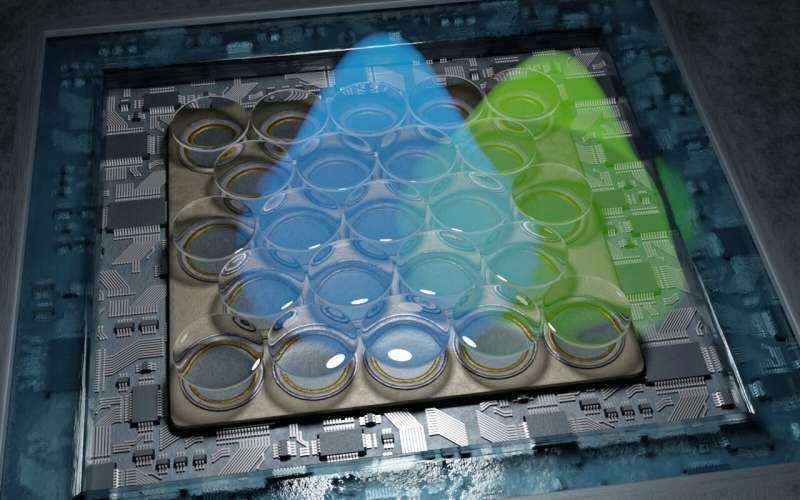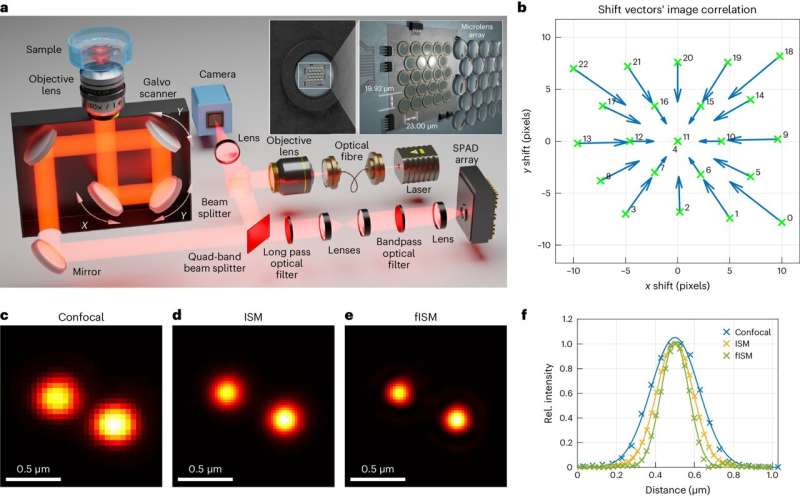This article has been reviewed according to Science X's editorial process and policies. Editors have highlighted the following attributes while ensuring the content's credibility:
fact-checked
peer-reviewed publication
trusted source
proofread
Glimpse into the nanoworld: Microscope reveals tiniest cell processes

What does the inside of a cell really look like? In the past, standard microscopes were limited in how well they could answer this question. Now, researchers from the Universities of Göttingen and Oxford, in collaboration with the University Medical Center Göttingen (UMG), have succeeded in developing a microscope with resolutions better than five nanometers (five billionths of a meter). This is roughly equivalent to the width of a hair split into 10,000 strands. Their new method was published in Nature Photonics.
Many structures in cells are so small that standard microscopes can only produce fragmented images. Their resolution only begins at around 200 nanometers. However, human cells, for instance, contain a kind of scaffold of fine tubes that are only around seven nanometers wide. The synaptic cleft, meaning the distance between two nerve cells or between a nerve cell and a muscle cell, is just 10 to 50 nanometers—too small for conventional microscopes.
The new microscope, which researchers at the University of Göttingen have helped to develop, promises much richer information. It benefits from a resolution better than five nanometers, enabling it to capture even the tiniest cell structures. It is difficult to imagine something so tiny, but if we were to compare one nanometer with one meter, it would be the equivalent of comparing the diameter of a hazelnut with the diameter of the Earth.
This type of microscope is known as a fluorescence microscope. Their function relies on "single-molecule localization microscopy," in which individual fluorescent molecules in a sample are switched on and off and their individual positions are then determined very precisely. The entire structure of the sample can then be modeled from the positions of these molecules. The current process enables resolutions of around 10 to 20 nanometers.

Professor Jörg Enderlein's research group at the University of Göttingen's Faculty of Physics has now been able to double this resolution again—with the help of a highly sensitive detector and special data analysis. This means that even the tiniest details of protein organization in the connecting area between two nerve cells can be very precisely revealed.
"This newly developed technology is a milestone in the field of high-resolution microscopy. It not only offers resolutions in the single-digit nanometer range, but it is also particularly cost-effective and easy to use compared to other methods," explains Enderlein.
The scientists also developed an open-source software package for data processing in the course of publishing their findings. This means that this type of microscopy will be available to a wide range of specialists in the future.
More information: Niels Radmacher et al, Doubling the resolution of fluorescence-lifetime single-molecule localization microscopy with image scanning microscopy, Nature Photonics (2024). DOI: 10.1038/s41566-024-01481-4
Journal information: Nature Photonics
Provided by University of Göttingen




















